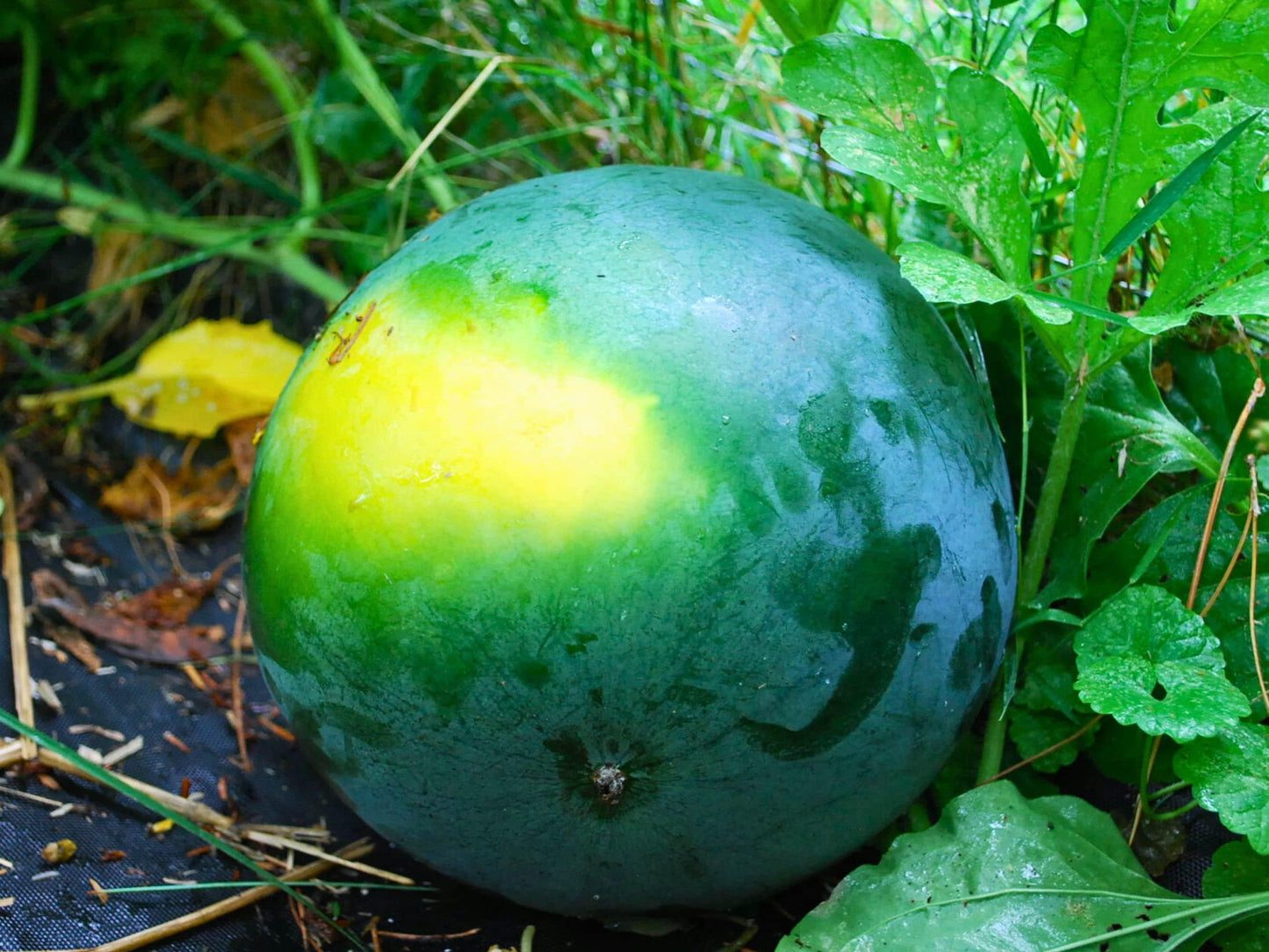(Citrullus lanatus) Sugar Baby, a 1959 heirloom icebox watermelon, packs a lot of flavor in a small melon. This easy to grow vegetable produces an abundance of 8" juicy 8 pound fruits.
Great container variety and also perfectly suited for northern climates.
As the name suggests, 'Sugar Baby' is delectably sweet and small enough to easily fit in the refrigerator. The vines are determinate, and the melons are ripe in just 75 days.
Watermelon is an excellent source of vitamins A and C, potassium, and antioxidants like lycopene. It is low in calories and high in water content, making it a refreshing and hydrating snack that can aid in weight management and overall health.
• Scroll down for detailed growing info •
All Nimble NiteCap Seeds are:
• Heirloom
• Organic
• Non-GMO
• Open Pollinated
• Untreated
• US Grown
• growing instructions included
• Regular testing is conducted to uphold the highest germination standards, all the while employing appropriate seed storage techniques.
Sustainable Packaging & Shipping:
• NimbleNitecap seeds are packed in eco-friendly, compostable seed packets. Seed packets are printed in house with vegetable-based inks on biodegradable, recycled materials. (Small plastic bags are infrequently used to prevent the loss of very small seeds.)
• All orders are carefully packed and shipped with tracking via USPS First Class (or Priority, if selected) in padded ECOENCLOSE recycled and reusable mailers, or recycled boxes to protect your items in transit.
Most orders ship out the same or next business day! Please note that this time may be extended during peak season.
• FREE SHIPPING on all orders of $35 or more. Flat Rate shipping no matter how many packets you order.
• DIRECTIONS •
Seed germination:
Watermelon seeds germinate best at temperatures between 70°F and 95°F (21°C and 35°C). You can start seeds indoors 2-3 weeks before your last frost date or sow them directly in the ground once the soil temperature has reached at least 65°F (18°C).
Indoor sowing:
If starting seeds indoors, fill seedling trays or small pots with a sterile seed-starting mix. Plant the seeds about 1 inch (2.5 cm) deep, and water them gently to moisten the soil. Place the containers in a warm location or use a seedling heat mat to maintain the ideal germination temperature. Seeds should germinate within 5-10 days.
Transplanting:
Once the seedlings have developed two true leaves and the danger of frost has passed, you can transplant them to your garden. Harden off the seedlings by gradually exposing them to outdoor conditions over a period of 7-10 days. Plant the seedlings 3 feet (90 cm) apart in rows that are 6-8 feet (1.8-2.4 meters) apart.
Direct sowing:
If sowing seeds directly in the ground, wait until the soil temperature has warmed to at least 65°F (18°C). Plant the seeds about 1 inch (2.5 cm) deep and 3 feet (90 cm) apart in rows that are 6-8 feet (1.8-2.4 meters) apart. Thin the seedlings once they have developed their first true leaves, leaving the strongest plant at each location.
Prepare the soil:
Watermelon plants thrive in well-draining, loamy soil with a pH between 6.0 and 7.5. Amend your soil with organic matter, such as compost or well-rotted manure, to improve drainage and fertility. If your soil is too acidic or alkaline, adjust the pH using lime or sulfur, respectively.
Choose the right location:
Watermelon plants require full sun, so select a location that receives at least 6-8 hours of direct sunlight per day. Make sure the area has good air circulation to help prevent fungal diseases. Watermelon needs a lot of space to grow – make sure your plant will have enough room to grow without crowding out other crops.
Planting:
Watermelons are sensitive to cold temperatures, so wait until the soil has warmed to at least 65°F (18°C) before planting. You can start seeds indoors 2-3 weeks before the last frost date or sow seeds directly in the ground. Plant seeds 1 inch deep (2.5 cm) and about 3 feet (90 cm) apart in rows that are 6-8 feet (1.8-2.4 meters) apart. If you’re using seedlings, transplant them carefully to avoid disturbing the roots.
Watering:
Watermelons have deep root systems, which means they require consistent, deep watering. Provide 1-2 inches (2-5 cm) of water per week, preferably through drip irrigation or a soaker hose, to keep the foliage dry and reduce the risk of disease. Water the plants early in the day to allow the foliage to dry before nightfall.
Fertilizing:
Apply a balanced fertilizer (such as 10-10-10) when planting and again when the plants begin to vine. You can also use compost or well-rotted manure as a side dressing. Avoid excessive nitrogen, as it can promote excessive foliage growth at the expense of fruit development.
Pollination:
Watermelons are pollinated by bees, so make sure there are plenty of flowers in your garden to attract these essential pollinators. You can also hand-pollinate by transferring pollen from male flowers to female flowers using a small brush or cotton swab.
Harvesting:
Watermelons typically take 70-90 days from planting to reach maturity, depending on the variety. Look for signs of ripeness, such as a dull thumping sound when tapped, a creamy-yellow spot on the underside where the fruit was resting on the ground, and the tendril nearest to the fruit turning brown and drying out.



















